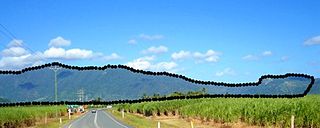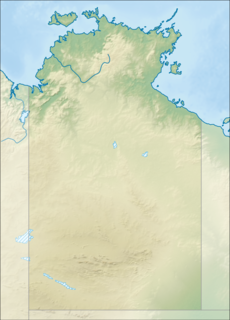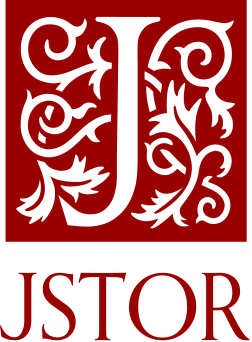This page is based on this
Wikipedia article Text is available under the
CC BY-SA 4.0 license; additional terms may apply.
Images, videos and audio are available under their respective licenses.

Australian Aboriginal religion and mythology are the stories traditionally performed by Aboriginal peoples within each of the language groups across Australia.

The Murrinh-Patha, or Murinbata, are an indigenous Australian people of the Northern Territory
Nganʼgityemerri—or Nganʼgi for short—is an indigenous language spoken in the Daly River region of Australiaʼs Northern Territory. The language is spoken in three mutually intelligible dialects: Nganʼgikurunggurr, Ngenʼgiwumirri, and Nganʼgimerri, which are 90% cognate but distinct languages sociolinguistically. Nganʼgi is spoken by about 150-200 people in the region around the Daly River and in a number of smaller outstations on traditional lands. Official census data, however, states only 26 at home speakers.
Murrinh-patha, called Garama by the Jaminjung, is an Australian Aboriginal language spoken by over 2,500 people, most of whom live in Wadeye in the Northern Territory, where it is the dominant language of the community. It is spoken by the Murrinh-Patha people, as well as several other peoples whose languages are extinct or nearly so, including the Mati Ke and Marri-Djabin.
The Mati Ke otherwise known as the Magatige, are an indigenous Australian people, whose traditional lands are located in the Wadeye area in the Northern Territory, Their language is in danger of extinction.
The Marrithiyal, also written Marithiel, are an indigenous Australian people whose traditional territory lay 30 to 50 miles south of the Daly River in the Northern Territory. They were sometimes known derogatively as Berringen(Berinken/Brinken), a term used by the Mulluk-Mulluk to refer to 'aliens'/strangers'.
The Mulluk-Mulluk, otherwise known as the Malak-Malak, are an indigenous Australian people of the Northern Territory, Australia.
The Madngella, otherwise known as the Matngala or Hermit Hill tribe, are an indigenous Australian people of the Northern Territory, Australia.
The Marranunggu are an indigenous Australian people, and language group, of the Northern Territory.
The Maridan were an indigenous Australian people of the Northern Territory.
The Maridjabin or Marrisjabin, were an indigenous Australian people of the Northern Territory.
The Emmiyangal, also known as the Amijangal, are an indigenous Australian people of the Northern Territory in Australia,
The Wadjiginy, also referred to historically as the Wogait, are an indigenous Australian people of the Northern Territory.
The Kungarakan (Koongurrukuñ) were an indigenous Australian people of the Northern Territory.
The Djerait were an indigenous Australian people of the Northern Territory
The Pongaponga were an indigenous Australian people of the Northern Territory. They may have been a band of the Ngolokwangga.
The Ngolokwangga are an indigenous Australian people of the Northern Territory.
The Yunggor were an indigenous Australian people of the Northern Territory
The Muringura, or Murrinh-Kura, were an indigenous Australian people of the Northern Territory.
The Wagoman were an indigenous Australian people of the Northern Territory.





